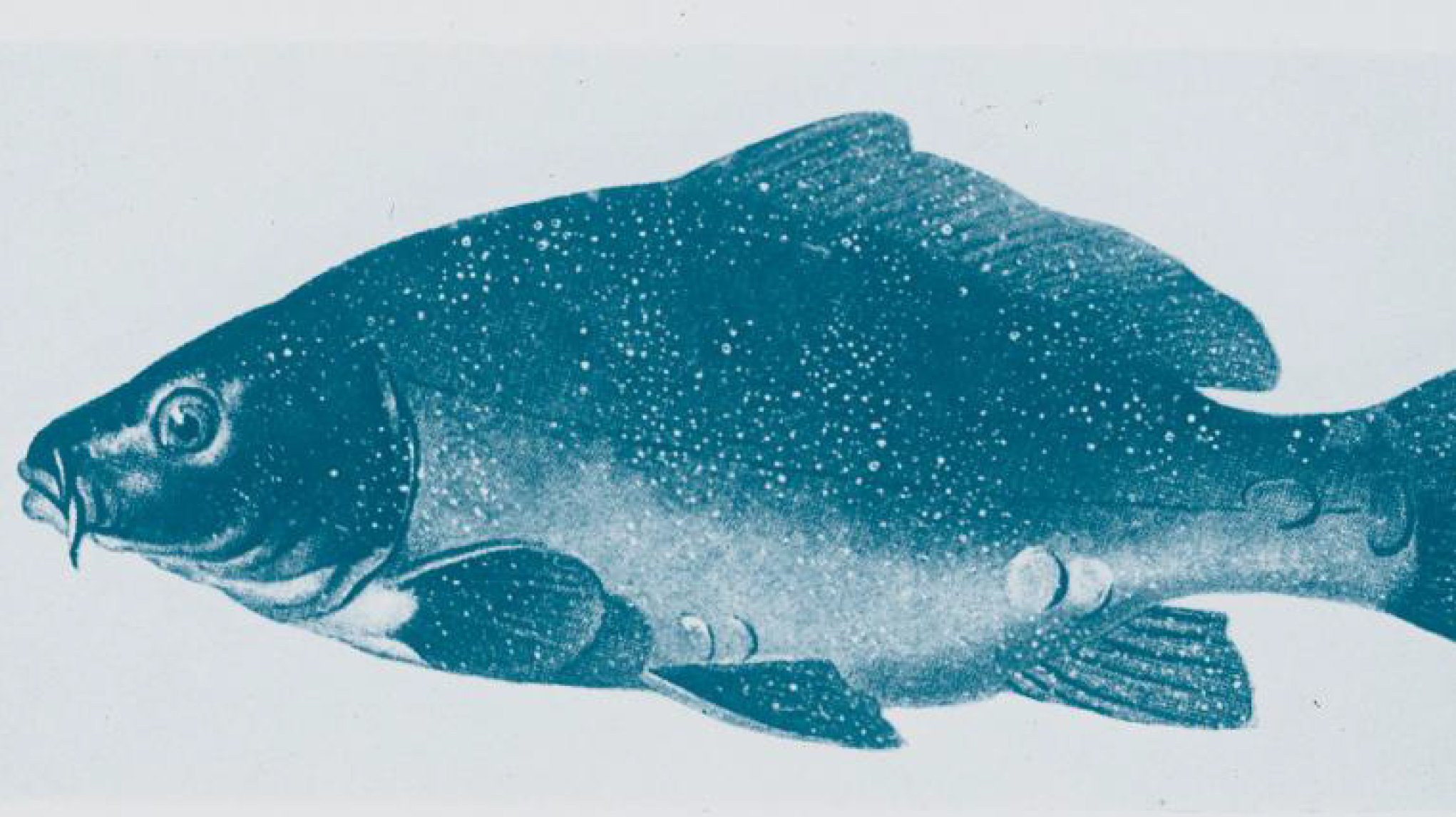Sundew featured in Danish press
Sundew was recently featured in the Danish trade magazine Ingeniøren.
To read the original article please click here (Subscription required)
Download the article as a PDF here.
Our translation of the original (by kind permission of the publishers) is below.
Molecular biologist Boqian Wu (right) and chemical engineer Mohammed Ibrahim working to improve the fermentation process. (Illustration:Marianne Fajstrup)
Small biotech company in pilot phase with remedy for dreaded fish parasite
Marianne Fajstrup May 26, 2022 (Translation: Sundew)
‘We were not sure in advance that it was going to be something with fish diseases. It should just be something with water, but it could have been aquatic plants, crustaceans, plants on land or livestock’, says Jørgen Hansen, CTO of Sundew, which is in the pilot phase of developing a new remedy against a fish parasite.
‘‘We did not have a concrete idea to start with. We had decided that we would make a biotech company because that is our expertise, and in order not to have too many commercialization paths, we narrowed our area of interest to diseases and pests transmitted by or in water’ says Hansen, who has a master's degree in molecular biology from Aarhus University and worked on his Ph.D. on yeast genetics at Carlsberg. He has worked in small biotech companies since 2003 and is one of four founders of Sundew.
‘We had gone to an IP Fair - we like to do that because university researchers have so much in their drawers. There we saw a poster about a substance that kills a particular fish parasite. We knew well about that fish disease because some of us had aquarium fish in the past. But it is also a big problem for fish farms,’ he says about the parasite known as ‘white spot’, or Ichthyophthirius multifiliis.
Carp with ichthyophthiriasis, from German textbook. (Illustration: The Dutch National Archives)
Sundew purchased a license to use the compound, which the university had patented. There was proof of concept on the mechanism by which the substance attacks the parasite. Sundew has conducted further studies directly on the parasite and has found, among other things, that it acts on four out of the five life stages of the organism.
The substance is formed by a naturally occurring bacterium that was found on the surface fish eggs. Biologists on fieldwork noticed that there were parasites on some of the eggs, but not on all of them. The researchers scraped bacteria off the eggs and, by comparing, could isolate a bacterial strain that was found to secrete the substance that has a destructive effect on the fish parasite.
‘We do not need to do anything to the bacteria to get them to excrete this substance. They do it themselves - even without GMOs involved. Our development has been about optimizing the process so that the bacteria produce larger quantities of the substance’, says Hansen, who would rather not elaborate on the exact elements of the fermentation process that have boosted bacterial production. Especially secret is the process that subsequently separates the bacteria from the active substance so that it can be freeze-dried. The ‘white spot’ treatment will be delivered as a powder that can be stored at room temperature for a long time – as long as it does not get wet.
Sundew founder Jørgen Hansen at the fermentation tanks, which are just the right size for a pilot project. Much larger than a normal microbiological laboratory but too small to be widely available in biotech production. (Illustration: Marianne Fajstrup)
What bacteria can do
The substance is a lipopeptide that destabilizes the membranes of living cells. Lipopeptides generally act as surfactants, lowering surface tension in water. We do not know why bacteria excrete them, but think it is because it makes it possible for them to make biofilms. ‘Science has only just begun to scratch the surface of what bacteria really can do. We have looked a lot at plants, searching for possible drugs and other substances. And we still do not know why this bacterium makes this lipopeptide. But we do know how the active compound works. It twists the cell membranes so that holes are formed and they become leaky,’ says Hansen. The lipopeptide from this particular bacterial strain specifically attacks ‘white spot’-type parasites. ‘We have tested its possible toxicity on three different fish species and it does not bother the fish at all. We have tested it on other beneficial aquatic organisms, and they are not affected by the concentrations needed to kill the parasite’, says Hansen.
Experiments have also been performed on the effect of the active compound on laboratory fish that have been infected with the parasite. The in vivo experiments were performed at the University of Copenhagen (one of the few places in the country that can do such experiments). ‘We’ve had some terribly sick goldfish that were all cured. Several months later, they are still alive and well,’ says Hansen. In principle, the same method could be used to develop new treatments for waterborne diseases in humans, however that requires that you as an entrepreneur aim to make a human drug from the very beginning.
‘If you make a substance and commercialize it for pig production, you will never get it approved as therapeutic remedy for humans, even though there is nothing biological to prevent it,’ says Hansen. But initially, their focus is on Ichthyophthirius multifiliis (often abbreviated to ‘Ich’), which attacks freshwater fish. Direct translated, the name means ‘fish lice with many children’.
The disease caused by the parasite is called ichthyophthiriasis or ‘white spot’ because it is the way to detects the parasite on the fish. But it is best known as the ‘fish-killer’, because that is the result if you do not discover it quickly.
Black telescopic eye veil tail, which is attacked by Ich. (Illustration: James Pickett, CC BY-NC 2.0)
A serious threat
There are remedies available today that can be used to combat Ich, but there are several drawbacks associated with each of them. An effective remedy is to pour formalin into the water. In Denmark, this is only allowed on special dispensation, which is given on an ongoing basis because the Ich parasite is such a serious threat to fish production.
Increasingly, oxidizing chemicals such as peracetic acid are used instead. It is non-toxic, but, on the other hand, not as effective against the parasite. Those agents need to be dosed more often. ‘When you treat the fish with conventional means, you have to wear respirators and empty large drums into the water. You only need a few milligrams per liter of our substance, and it is quite harmless to both humans and animals. It will be of course a much higher price per kilo, but we aim to deliver a product that is as good or better at cost-in-use’, says Jørgen Hansen.
Sundew’s eventual target is food and food safety, with a particular focus on aquaculture. The fish-killer, Ich, lives only in fresh water, but it has some cousins out in the ocean. Hansen says, ‘there are two saltwater parasites that are similar to Ich, and our active also affects them’. Initially, however, Sundew does not focus on edible fish from fish farming (although that is the end goal) but on aquarium fish and other ornamental fish. All freshwater fish can get fish-killer, and it can arrive with new fish and spread quickly both in aquariums and in garden ponds.
Ornamental fish is a smaller market than the aquaculture, but Sundew expects different prices when treating expensive koi carp or other hobby fish for aquarium enthusiasts. ‘We can enter the ornamental fish market faster because the regulatory burden is not as heavy as with food. To sell the product for edible fish in aquaculture, the regulatory process is reminiscent of the processes for pharmaceuticals’, says Hansen.
A marriage created in heaven
Jørgen Hansen is one of four founders of Sundew, two of whom come from the scientific side and two from the business side. In August 2020, Sundew started a program at the BioInnovation Institute (BII) which is a Novo Nordisk Foundation-supported incubator for life science startups. At BII, they gained access to laboratory equipment and were able to embark on production experiments. In addition, they were able to test the compound on another type of parasite that can live without fish but is affected by Sundew’s compound in the same way as Ich. The company's marine biologist still works in the BII laboratories and continues to perform quality tests on this model organism and other experiments at small scale. However, production trials grew rapidly out of the test laboratory and BII suggested contacting Alfa-Laval Innovation House in Søborg, which, after two years, has just been expanded by another 3,000 square meters in a former factory hall. ‘It was a marriage created in heaven. We need equipment for fermentation and purification, so Alfa Laval got a potential customer for their products. And we got an opportunity to scale up without paying a fortune to a contract research organization’.
In the hall, there is room for both laboratory equipment and for two 5,000-liter fermentation tanks, where Sundew performs pilot production experiments. Scaling up is a special challenge with biological processes. You have to plan for large natural variations, which mean that processes can vary enormously when moving from the laboratory to large scale. ‘There has simply not been anything like this in Denmark before, where you could rent and do industrial scale incubation. And even if you wanted to pay to have it made by third parties, you would not get the same benefit if you do not have your fingers in the daily work’, says Hansen.
The neighbors in Innovation House are other entrepreneurs who also work with biotechnology. You can buy your own equipment and people can be hired on-site to install it. There is access to a wide range of common facilities and the opportunity to have office space. ‘Ten to twenty years ago, we did not have the same opportunity. In any case, it would not have happened nearly as fast without the incubator environment, for which both the Novo Nordisk Foundation and Alfa Laval should take credit. We have received funding to hire some people, but I still see ourselves as a ‘garage company’, even though the garage out here is a little bigger’, says Hansen.





